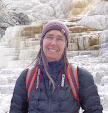I cannot help but be caught by the rich history of
Montana, its towns, tribes, ethnic groups, people and places. This summer I
have had the ability to begin to personally explore the stories of Philipsburg,
Granite and Butte. The lives of the miners, merchants, women and familes of these towns are gradually becoming more evident.
The
desire to know, to feel and to understand what their lives were like, beckons
me like the voices of the Canada geese as they drift across the fields and
mountains.
In the Philipsburg cemetery, I see on headstones signs of the ravages
of a 1880s diphtheria outbreak that ripped away a whole family of children; the
four-year old who died on May 17th, 1885, the two-year old on May 21st, and the six-year old on May 28th. All lost within one month. The
sorrow and grief of these losses, of any parent, spans the years. We feel it.
In the long past richness and also poverty of Butte’s
east side, one can imagine the wealth that walked the streets. The bankers,
investors, builders, all milling on these sidewalks and in these buildings as
they strove to create businesses and make a fortune, their signs of affluence still
present.
Alongside these were the miners who dropped down hoists
each day into the dark bowels of the earth to extract the hoped for riches.
What was it like to enter a cage and be let down into a hole, far from the
sun’s warmth? Did the ground in Butte shake as another one of the hundreds of
tunnels under the city was dynamited in the quest to follow the next vein?
How did women live in this frontier, mining environment
as business people, wives and mothers? When the ethnic groups and mix of
languages intersected with one another in their day-to-day lives, how did they
communicate?
I have more questions than answers. The writer, explorer
and dreamer always does.








